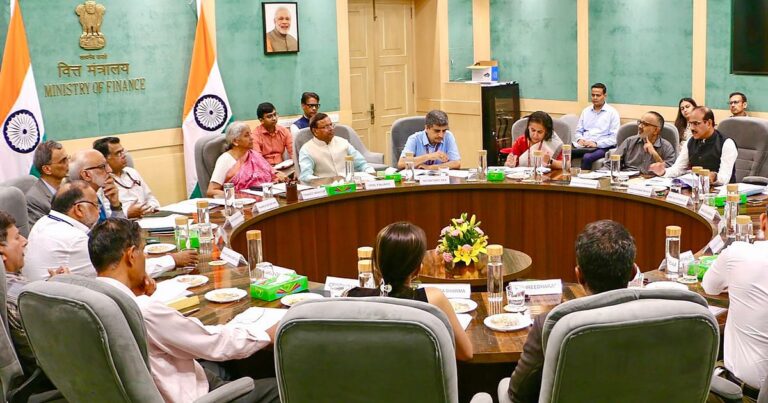NEW DELHI: Prime Minister Narendra Modi will seek to rekindle relations with voters in his federal budget next week, economic analysts say, citing measures that could boost jobs and incomes at a time when economic growth is uneven and food prices continue to soar.
Modi’s party fell short in midterm elections that ended last month, with rising employment and living costs casting a shadow over his fierce Hindu nationalist campaign.
To stay in power, Prime Minister Modi relies on two fickle regional alliances — the Telugu Desam Party (TDP) and the Janata Dal (United) — which control the states of Andhra Pradesh and Bihar respectively.
Finance Minister Nirmala Sitharaman is due to present the first budget of the Modi government’s third term on July 23, which will give the first glimpse into changes to the government’s economic policy.
The new budget will replace the provisional budget estimates for the 2024/25 financial year, which began on April 1.
“We believe the budget will balance economic and political imperatives,” said Shreya Sodani, regional economist at Barclays.
“This means that the government will use the RBI dividend and the windfall from higher tax revenues to fund increased spending rather than reducing the deficit,” Sodani said, referring to the Reserve Bank of India.
A record $25 billion surplus transfer from the central bank gives the government more room to spend without widening the deficit, and most economists surveyed by Reuters predicted the deficit target would be kept at 5.1 percent of gross domestic product.
Over the past three years, the government has nearly doubled spending on long-term infrastructure projects as a way to boost growth and create jobs.
The government plans to spend 11 trillion rupees ($131.61 billion) on such projects this year, and some economists expect the budget to provide additional support to the manufacturing sector.
“We expect the government to continue to focus on promoting domestic manufacturing,” Nomura economists said in a note, adding that they expected to tighten local content requirements and extend preferential tax rates for new manufacturing facilities.
The government is also expected to introduce measures to boost consumption that were not included in the interim budget presented before the election.
According to a Reuters report, the next budget may see a cut in personal income tax for some categories.
“Indian middle class has staunchly supported Prime Minister Modi, but for years they have not received much relief,” said political analyst Rashid Kidwai. “It’s time the government gave them some relief.”
At the same time, the South Asian country may increase government subsidies for rural housing and food.
Pandora’s Box
To put the government on the back foot, two of its key allies have asked their states for $6 billion in funding, with similar demands likely to come from other states.
Before the election, many states, including opposition-ruled West Bengal and Kerala, alleged they were not receiving a fair share of funding from the Indian government – a claim the federal government disputes.
“This is like opening Pandora’s box,” Kidwai said of the demands from allies.
He said preferential treatment for allies would lead to “a lot of heartburn.”
However, one preferential measure that could be offered to states would be to increase the interest-free long-term loans the federal government provides for infrastructure projects from the current 1.3 trillion rupees.
Axis Bank expects this allocation to increase by Rs 4 trillion.
Market Borrowing
Despite spending pressures, spending was sluggish and tax revenues were strong in the first half of the year, so the government is likely to maintain or reduce its market borrowing plans for this year.
Total market borrowing will be kept at 14.13 trillion rupees, according to a Reuters poll, but some economists say there is room to cut the amount.
Borrowings are expected to be reduced by 4-5 trillion rupees compared to the interim budget, according to JPMorgan estimates.
Published July 18, 2024 10:09 IST

